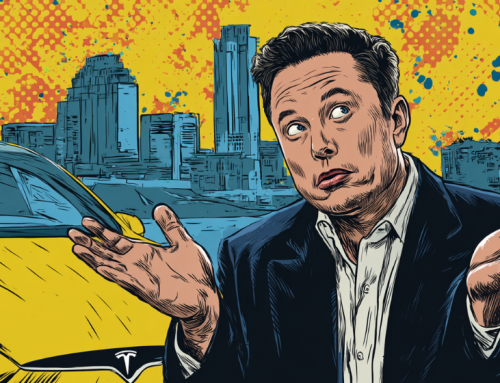
Ben and Jerry Speaking at A.C.T. to End Racism Rally.
How Companies Can Make Profits and Win Hearts
A recent Harvard Business Review story explains how businesses can develop a way to build a culture in which a company can be successful, profitable and socially useful to its community. Companies that seek to grow often sacrifice one principal to remain successful.
According to HBR:
“Something similar often happens when companies try to invent new businesses while keeping the old ones going. They try to support both businesses, but when money’s tight, one of the two nearly always wins out.
We call these sorts of tradeoffs “strategic paradoxes.” To manage them effectively, leaders need more than just resolve. They also need a carefully designed framework of support. Our research suggests that this framework should include three important elements: organizational guardrails, dynamic decision making, and what we call both/and leadership.”
Organizational Guardrails
It’s the old zero-sum game analogy. If one side wants to win the other side must lose. That doesn’t have to be the way of the future for your business. Here’s an example of finding balance:
Consider what happened at Digital Divide Data (DDD), a social business that trains and hires underprivileged workers to do outsourced IT work. DDD’s founder and initial management team knew that they focused more energy on their mission than on making money, so they made sure that their board included some tough-minded, business-savvy members. That decision helped save the company. When one of those board members noticed some troubling patterns, he dug into the books and discovered that unless DDD got serious about making money, it would have to shut down in a matter of months. Senior leaders then made some tough but essential changes and turned DDD around.
On the other side of the issue, when Unilever approached Ben Cohen and Jerry Greenfield about buying Ben and Jerry’s, the founders worried that the acquisition would compromise their company’s social-responsibility mission. So they negotiated for an independent board of directors that would keep an eye on their mission and think beyond just profits and growth.
How The Social Mission Of Ben And Jerry’s Survived Being Bought By Unilever
Dynamic Decision Making
But it takes more than organizational guard rails, but also dynamic decision-making.
DDD’s leaders initially hired profoundly disadvantaged people in Cambodia without much concern for their professional qualifications – women rescued from sex trafficking, for example, and people with serious physical disabilities. Great for the mission, but not the most efficient way to optimize profits. Since then, the company has modified its practices to better meet its financial objectives: it has stuck to its mission of hiring underprivileged workers, but now it also screens them for analytical skills and learning capacity. DDD also engages in dynamic decision-making when selecting new work locations, with an eye to keeping the company both mission-driven and financially sustainable.
Both/And Leadership
Last but not least, consider, dual-purpose organizations need leaders who are committed to managing the built-in tradeoffs. This requires what we call both/and leadership, and not just on the part of the founder or the CEO.
The concept requires the entire senior team to be on board with the idea that profits, and social standings, can go hand in hand. Some of your staff will be right at home with the concept, others perhaps not. When DDD came up on this friction, they moved people out and brought like-minded people in. People who appreciated both sides of the paradox.
It isn’t easy to institute these three concepts. But the writers conclude that the payoffs will be priceless, substantial and worth the effort.
Marya Besharov is an Associate Professor of Organizational Behavior at the ILR School at Cornell University.
Wendy K. Smith is a professor at the University of Delaware’s Alfred Lerner College of Business and Economics. Her Twitter account is @profwendysmith.
Michael L. Tushman is the Paul R. Lawrence MBA Class of 1942 Professor of Business Administration at Harvard Business School and director of Change Logic, a Boston-based consulting firm specializing in innovation, leadership, and change. He is the co-author, with Charles O’Reilly, of Lead and Disrupt, (Stanford University Press, 2016). You can follow him on Twitter at @MichaelTushman.







Leave A Comment